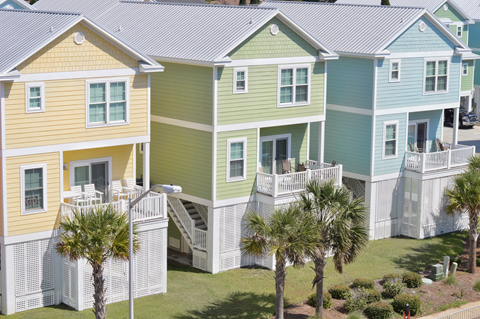The Ultimate House Viewing Checklist for Buyers
06 Jan
Please wait...
25 Jan

Setting the right rent amount might seem tricky. You want to price it high enough to cover your mortgage and make enough to save up for repairs and gain some profit. However, you do not want to price your house out of the market and have it sit vacant because it is more expensive than other rental properties in the area.
When you are trying to determine how much rent to charge, there are several factors you will want to consider. An excellent first step is figuring out what your home's currently worth in the market (smartasset.com).
While you will have to pay for an appraisal, it might be worth it to hire an appraiser to give you an assessment of what your home is worth, based on its condition, amenities, local home sale prices, and location (smartasset.com).
The 1 percent rule states that you should set your rent price at 1 percent of your property's overall value. With this in mind, some experts suggest that you should aim to charge your tenants between 0.8 percent and 1.1 percent of the home's value. For example, for a home valued at $250,000, a landlord could charge between $2,000 and $2,750 each month (smartasset.com).
However, if your home is worth $100,000 or less, it is best to charge rent that is close to 1 percent of your home's value (smartasset.com). If your house is more expensive (meaning that it is worth over $350,000), you might want to consider charging less rent than the suggested percentages so that your rent price does not get too high and you can attract more buyers (smartasset.com).
The percentage rule, however, is just a guideline. More importantly, you will also want to research what landlords are charging for similar rentals in your area. Sites like Kayifi for the Caribbean and Zillow for the United States are great sites to provide you this information.
When you are looking at other rentals in the area, to determine if a property is similar to yours, and therefore a viable comparison, evaluate the following: lot size, number of bedrooms, number of bathrooms, year built, the year most recently remodeled, and included amenities (rentprep.com).
After researching comparable rental homes in your area, you will need to evaluate if the price you arrived at after calculating the suggested percentage of the home's current value is too high or low.
Another important consideration is the average income of those who live in your property's location (mysmartmove.com). Your rental rate should target prospective renters with similar incomes so you can fill your space more quickly and increase your chances that your tenants will have the means to pay their rent consistently and on time (mysmartmove.com).
Additionally, seasonality matters! Historically, rental property demand tends to be highest March through August, plateauing November through February (mysmartmove.com). There are many reasons for this, but one of the factors is that often parents do not want to disrupt their children's school year.
Keeping seasonal renting trends in mind, you might not be able to set your rent as high when you are looking for a tenant in the softer rental demand months than if you post your listing March through August.
Hopefully, the acceptable rent amount you arrive at will cover your mortgage, as well as repair costs, taxes, homeowner's association fees, home owner's insurance, and leave room for a profit. If it does not, you might want to consider selling your home instead of renting it. If you cannot make a profit, it does not make much sense to rent it out.
When you are ready to rent out your property, you can have a real estate agent list it for you and schedule showings or manage the entire process yourself. You can list your home for free on sites like Kayifi if you are in the Caribbean and Zillow if you are in the United States.
Sources:
mysmartmove.com
rentprep.com
smartasset.com